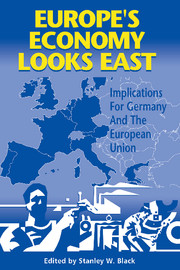Book contents
Comments
Published online by Cambridge University Press: 03 February 2010
Summary
The authors are to be commended for this effort to quantify the labor market effects of immigration. I am somewhat surprised, however, by the magnitude of the gains to the recipient country that they obtain. In understanding the results it may be helpful to step back from their more sophisticated model and start with the simplest formulation. Most prior analyses have concluded that the net effects on the native population are small: that the immigrants receive nearly all of the increment to output in wages; and the implications for the natives are largely redistributional. Existing workers lose through a fall in their wage rate, but this is offset by an increased return to capital, which has become relatively more scarce. The effects on the resident population are not completely redistributional, however, because the gain to capital exceeds the loss to labor. It is this net gain, the immigrant surplus, that the authors find to be significant in some of their disequilibrium analysis.
The analytics can be illustrated graphically as an outward shift of the labor supply that lowers the wage rate (Figure 7.8). The gain to immigrants is given by the area BNN'C, and the loss to resident workers by the area WW'BA. The gain to capital is given by the redistribution away from resident workers plus the triangle ABC, the immigrant surplus.
- Type
- Chapter
- Information
- Europe's Economy Looks EastImplications for Germany and the European Union, pp. 307 - 312Publisher: Cambridge University PressPrint publication year: 1997



